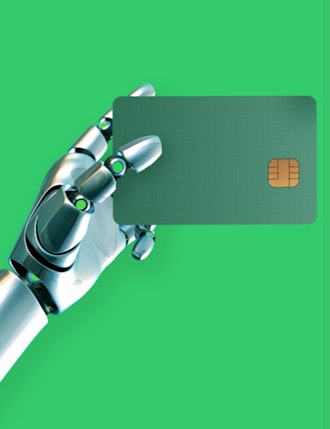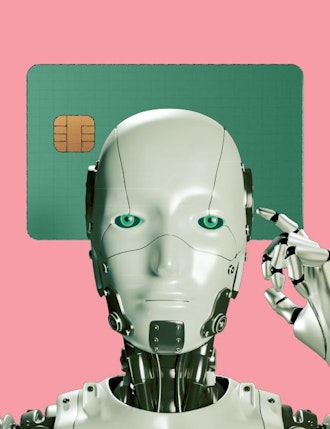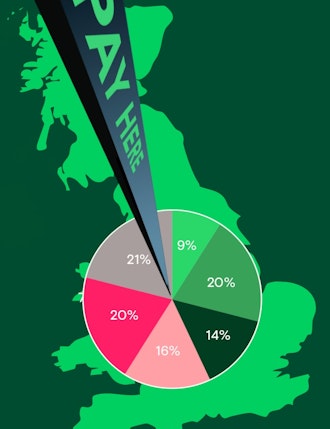Whilst artificial intelligence (AI) has actually been with us longer than many people realise, it’s fair to say that the last two years have seen its widespread recognition and adoption by the wider public and businesses.
Much of that has been driven by the opening up of Open AI’s ChatGPT and, following this, Google’s Bard, recently renamed Google Gemini. Widespread access to and use of these generative pre-transfer (this is where the GPT in ChatGPT comes from) tools has encouraged businesses to use them in order to automate processes and develop novel applications of the technology on a large scale, to which the payments industry is no exception.
The payments industry already has a good track record when it comes to using and deploying AI. When Apple Pay launched in 2014, AI played a role in ensuring the security of customer accounts and payments and a year later, robo advisors were giving investment tips and helping customers manage their portfolios.
Given the payment industry’s enthusiastic adoption of new technologies to disrupt markets and improve the range and quality of services offered to customers, where might the payments industry take AI next?
Don’t believe the hype
One of the challenges with understanding where AI might take us next is to cut through the hype that AI has stirred up and get a clear picture of what the technology can actually deliver.
Generative AI isn’t capable of novel thought like a human, it needs a set of data to learn from, and if that data set is poor quality or inaccurate then output from that AI is unlikely to be useful. AI systems can’t be left on their own with no inputs and start learning things and generating outputs.
It’s also not the case that these systems are capable of big leaps in intelligence, suddenly learning whole new skill sets from nowhere. A team from Google Bard at one point claimed that the system had learned to translate other languages into Bengali despite no training to do so, whilst a ChatGPT team have claimed that the system showed sparks of general intelligence, where the AI was capable of the sort of thought that humans can achieve. This plays into one of the fears some people have that AI will make a leap to general intelligence but in a way that might be malicious, even wondering if the combination of general intelligence, malicious intent and access to vast sets of data on virtually all fields of knowledge might lead to some kind of doomsday scenario.
Subsequently however, other teams of researchers have shown that AI in fact developed abilities on a smooth and predictable curve and that the huge leaps in intelligence feared by some are, so far at least, unfounded.
When it comes to the worlds of payments and finance, whilst AI applications will be disruptors, the extent and speed of this is likely to be tempered somewhat by the fact that these industries are highly regulated. Whilst there has been plenty of disruption in the payments space, this isn’t an industry that has embraced a “move fast and break things” mantra in the same way that others have.
One issue that has come to light with the wider deployment of AI systems is that of hallucinations, where AI produces an incorrect or misleading result, by hallucinating an answer. There are plenty of examples of this, for example when ChatGPT was asked “what is the world record for crossing the English Channel on foot?”. Instead of identifying this as a nonsense question, ChatGPT confidently answered that the record was held by German Christof Wandratsch instead of identifying that it was a nonsense question.
For another good example of AI not getting the facts quite right, see our article on testing ChatGPT’s payment knowledge. Here the language model based chat application wrongly identified the Diner’s Club card as the first credit card and only after prompting by its human interlocutor managed to correctly identify American Express’ credit card as the first in the field.
Whilst the Wandratsch case is amusing and the American Express case trivial, AI systems hallucinating or making errors in payment processing or payment orchestration could have dire consequences for businesses and their customers. It is these kinds of issues with AI that payment technology companies will have to be aware of and navigate carefully. This in turn means that the rapid and widespread deployment of AI in payment tech will likely not happen.
Improving security, efficiency and customer touchpoints
So where and how will finance and payment companies use AI? Customer services and security are two obvious areas and as noted above, this is where AI has been used by the industry already.
Cracking the Code
Noticing anomalous patterns in spending is natural territory for an AI. Whilst a human might suddenly notice a huge increase in spending on an account normally used for small day-to-day transitions, an AI with access to a huge dataset can more easily spot subtle patterns or changes over a long period of time and compare those to other known instances of fraud, identifying less brazen fraudulent transactions.
Accurate Interactions
Away from security, customer interactions can also be improved by the deployment of AI. Compared to traditional chatbots that relied on complex decision trees to guide interaction, AI driven chatbots can use the data it has access to, to better understand the context of a query and can also interpret a much wider span of language from a user, so even if they express their needs in terms it might be hard for a designer of the system to fully interpret, the chatbot has a good chance of usefully responding to the query. This means a better and likely faster experience for the user and efficiencies for the business.
Frictionless Shopping
In store payment solutions is another area where AI is likely to drive significantly improved customer experiences. Probably the best known example of this is Amazon’s Just Walk Out technology that uses a combination of technologies including image recognition AI to create the ultimate frictionless unattended payment experience where customers can literally pick up an item and walk out of the store.
Smarter Selling
Another way that in store payment can be improved with AI is in customer offers and personalisation. As customer data is captured over a number of transactions, AI systems can interrogate this data and learn when is the right time to nudge a customer, send them a special offer or personalise and experience based on factors that are unique to them. This is a way that small and medium size business can compete with bigger players, since they can start to offer this even if they collect data from a relatively small customer group.
Getting in the game
How can businesses in the sector start to leverage the benefits of AI? Previously the barriers were significant, requiring a huge amount of technical know-how coupled with the ability to marshall vast computing resources. However, barriers to entry have diminished significantly with API’s allowing easy access to and scaling of ChatGPT and Gemini.
The key barrier for many businesses is simply having the data sets to train AI models. Data gathering, management and cleanliness are a key issue for many businesses and lots are only just waking up to the opportunities good quality and well managed data has to offer. To generate meaningful uses of AI, it is this first step that may prove the hardest to take.
The good news is that high quality and useful implementations of AI may not require as much data, computing power or time as previously thought. In spring 2023 a memo from a Google insider working on their AI offering was leaked. The memo makes clear that neither ChatGPT or Gemini (then Bard) are as ahead of the curve as previously thought, and that major strides in the development of AI were being made by individuals and small teams working at home on laptops and mobile smartphones. One of the key things noted in the memo that should be a source of relief to businesses looking to develop and scale their own models is that if data set quality is stacked against data set size, models using high quality data will perform better. This means that as long as data hygiene is maintained and the right data points are captured, payment businesses can develop their own AI models with relative ease.
Responsible innovation
We expect to see businesses in the payments sector making more use of AI to improve security and customer experience first and foremost then take this further in arenas such as frictionless payment and tailored customer experience. However, because of regulation, and with one eye on the limitations of AI, the pace of development will be balanced against the need for security and ultimately confidence in payment systems and infrastructure.
Interested in reading more around this subject? Here are some useful articles…













